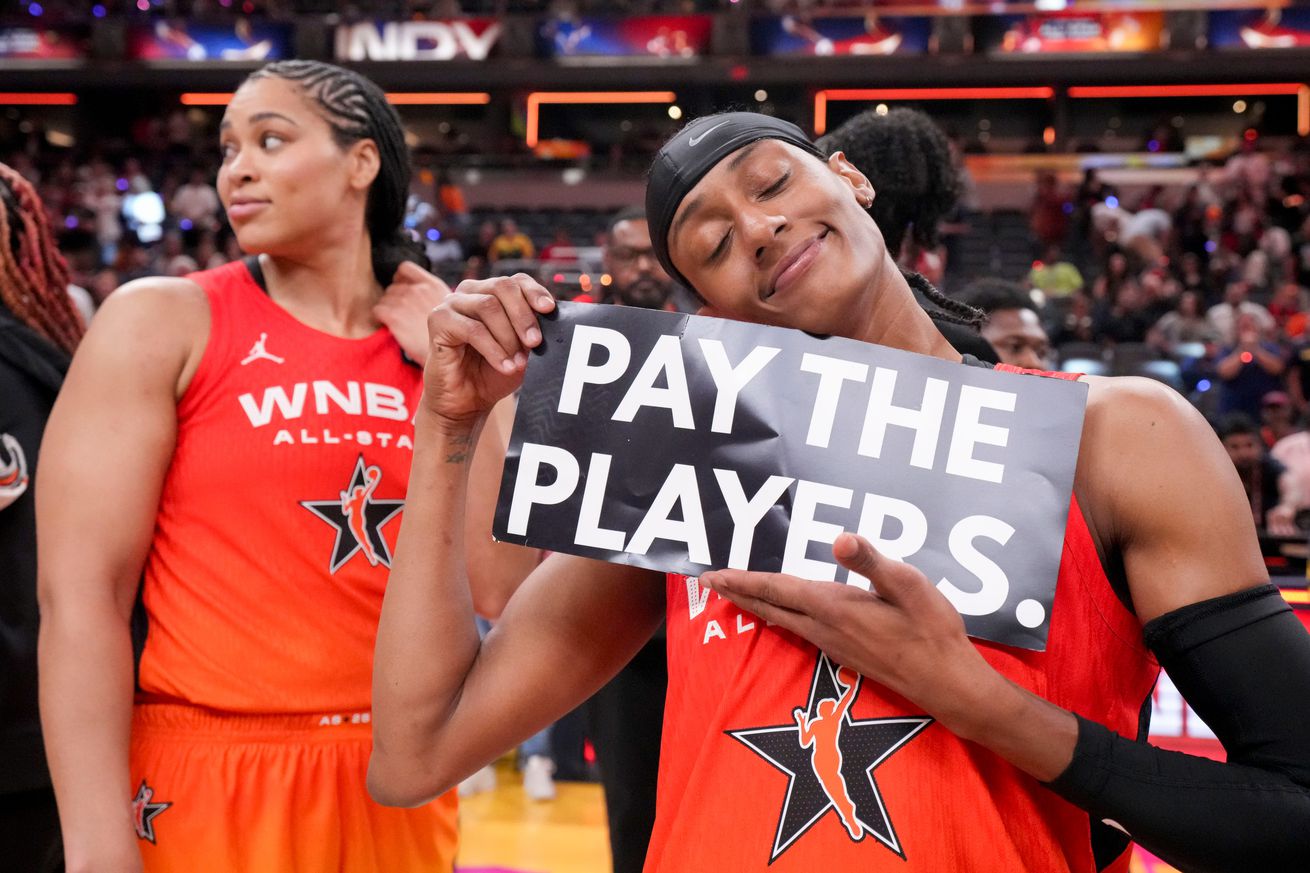
The WNBA players’ union must push heavily to lengthen the season, which has become far too condensed.
“Pay us what you owe us.”
The now-iconic slogan, donned by the WNBA All-Stars on t-shirts during warmups for the league’s annual All-Star game, underscores the divide in the ongoing negotiations between the WNBA players’ union and the league that employs them.
WNBA players making a statement at the All-Star game:
“Pay us what you owe us.” pic.twitter.com/AL1uf7lfEB
— Legion Hoops (@LegionHoops) July 20, 2025
The WNBA players’ association (WNBPA) is currently negotiating with the WNBA to draft a new collective bargaining agreement after the league signed a gargantuan $2.2 billion media rights deal. Media rights deals are the league’s largest source of revenue (and thus the primary source of player salaries), and the new one is at least four times larger than the previous one with the potential to grow, should even more media partners sign on in the future.
The soon-to-be completely transformed WNBA salary structure warrants volumes of discussion on its own, but for now, there is a different issue I would like to focus on: season length.
Hall of famer Rebecca Lobo recently took to Twitter to point out the dramatic decrease in average rest time between WNBA games — since 2021, the average days of rest between games dropped from 4.03 to 2.7.
A priority of @TheWNBPA in the new CBA has to be addressing the condensed schedule. This season there are too many games in too short a period of time. (Research: Garrett Gastfield)
AVERAGE # OF DAYS BETWEEN GAMES
2021: 4.03
2022: 2.81
2023: 2.88
2024: 3.23
2025: 2.70— Rebecca Lobo (@RebeccaLobo) July 27, 2025
The week the Washington Mystics are currently enduring exemplifies this schedule crunch: from Jul. 26-29 they play three games in four days, then they get a day off before having to suit up for a fourth game in a six-day span.
The WNBA has added 12 games to the schedule since 2021, an unequivocal positive in the eyes of league sponsors and stakeholders. More games means more eyes on screens, more moments to be turned into highlights, and more to sell to potential sponsors, meaning more money.
For players, the requisite changes to schedule length have not been made. The 2021 WNBA season ran from mid-May to mid-October. The 2025 season runs in the exact same window of time with 12 more games, plus the 2025 Finals will now be a best-of-seven series as opposed to the previous best-of-five format.
This crowding of the schedule is desirable for league partners, as it simply means that more of the WNBA product is being offered to the consumer. But for the players, the condensed rest time means both less time with their families and greater risk of injury due to stress and overexertion.
Given that the WNBA product cannot function without the players, this is not a fair trade-off, and expanding the existing season schedule over a longer period of time should be a crucial point in negotiations for the WNBPA in their ongoing negotiations with the owners.
The primary drawback with such a proposition is the potential for a lengthened WNBA season to interfere with overseas commitments, as a large number of players play overseas in the WNBA offseason to supplement their salaries.
However, since player salaries are set to dramatically increase in 2026, far fewer players will have to play overseas, and most will be able to finally enjoy the type of proper offseason previously only accessible to the players with large endorsement deals and offseason coaching or media jobs.
Additionally, WNBA players wield more influence over foreign leagues than international-first players do over the WNBA. For example, Ivana Dojkić, who during her two years in the WNBA prioritized her overseas commitments in the Italian Lega Basket Femminile, was allowed to report to WNBA training camp late, a standard grace granted to foreign stars. Surely WNBA players still playing in Europe and Asia in the coming years will be given similar grace by their overseas teams should the WNBA season be extended.
During this round of CBA negotiations, the WNBA players have more leverage than they’ve ever had before — the threat of a work stoppage given the WNBA’s exponential growth since 2022 certainly keeps the owners laying awake at night staring at their diamond-encrusted ceilings.
Since the WNBA’s recent growth has been driven by individual players’ star power (plus the players have a viable offseason league in Unrivaled upon which to fall back), the WNBPA is uniquely positioned to force the owners into acquiescing to their demands. Chief among these should be the demand that the timeframe of the season be extended to account for the additional games being worked into the schedule.
